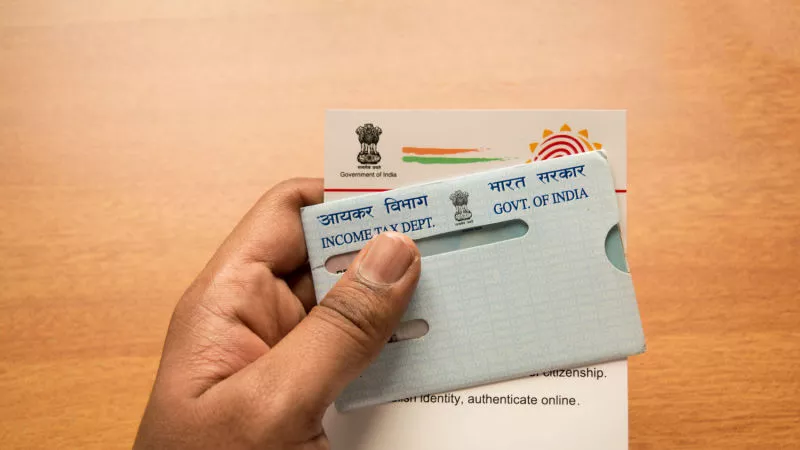
The Income tax Act has provided for taxation of income under various heads depending on the nature of the income. One of the important heads of income under which the income is taxable is the capital gains.
Capital gains are the profits earned on the sale of an asset. Such gains can be in the nature of short-term or long-term gains and are taxed at various rates.. Short-term capital gains are on short-term assets that are held for a period of 3 years or less. In the case of equity shares and equity-related instruments, STCG is applicable on assets held for a period of less than or equal to a year.
Long-term capital gains are applied to assets held for a period of more than 3 years. This condition is not applicable on immovable properties like land and/or buildings. The period of holding in case of long-term capital gains arising from immovable properties is 2 years or more from FY 2017-18. Tax on such assets is at the rate of 20% with the benefit of indexation.
The Income Tax Act provides relief in the form of exemption on the capital gains generated from the sale of such long-term capital assets. This exemption is condition based and helps in reducing the tax liability of the assessee.
Given below are the details of section 54EC in this regard.
What is Section 54EC?
Section 54EC provides an exemption to the taxpayers from the tax liability on account of long-term capital gains. Such exemption is available on the capital gains generated out of the sale of any immovable property held for a period of 2 years or more.
This section requires the taxpayers to invest the long-term capital gains in eligible bonds to claim the exemption under this section. The bonds for the purpose of this section are Government-backed and hence are considered to be risk-free. They provide interest at the rate of 5% per annum on the amount invested in these bonds. This interest is taxable in the hands of the assessee and is taxed at the applicable slab rates. The maximum exemption under this section is up to Rs 50,00,000.
Capital Gain Bonds by IRFC, NHAI, PFC, and REC
Capital Gain Bonds are a type of investment instrument that offer tax-saving benefits to investors. The Indian Railway Finance Corporation (IRFC), National Highways Authority of India (NHAI), Power Finance Corporation (PFC), and Rural Electrification Corporation (REC) are some of the entities that issue such bonds.
NHAI and REC had issued 54EC Capital Gain Bonds, which are specifically designed to save taxes on long-term capital gains. The bonds have a lock-in period of three years, and the interest rate offered is 5.25% per annum.
Investors can invest up to Rs. 50 lakhs in these bonds, and the interest earned is taxable as per the investor’s income tax slab. However, the principal amount invested is exempt from tax. Investors looking to save taxes on long-term capital gains can consider investing in these bonds.
Bonds eligible for exemption under section 54EC
The eligible bonds for exemption under Section 54EC include:
- Bonds issued by National Highways Authority of India (NHAI)
- Bonds issued by Rural Electrification Corporation (REC)
- Bonds issued by National Bank for Agriculture and Rural Development (NABARD)
- Bonds issued by Small Industries Development Bank of India (SIDBI)
- Bonds issued by Indian Railway Finance Corporation (IRFC)
These bonds typically have a lock-in period of 5 years and offer an interest rate ranging from 5% to 6% per annum. The maximum investment that can be made in these bonds is Rs. 50 lakhs per financial year.
What is the amendment in section 54EC?
The finance budget of 2018 has amended section 54EC of the Income Tax Act, 1961. As per the earlier provisions, the exemption was provided under this section for the sale of any long-term asset provided the proceeds are invested in specified bonds within 6 months. After the amendment, an exemption under this section is available only in the case of the sale of long-term immovable properties. The bonds are redeemable after a period of 5 years as against the earlier period of 3 years. The amendment in this section is applicable from 1st April 2018.
What are the eligible investments under 54EC?
The provisions of section 54EC have specified the eligible bonds that can provide an exemption of up to Rs. 50,00,000 to the eligible investors. The list of eligible bonds applicable for this section is mentioned below.
- National Highway Authority of India
- Rural Electrification Corporation Limited
- Any other bond notified by the Central Government
Points to be considered to get an exemption under section 54EC
The exemption of section 54EC provides relief from the high long-term capital gain tax charged at the rate of 20% excluding cess and surcharge. This exemption is subject to certain conditions which are detailed hereunder.
- The most important condition to avail the exemption under this section is long-term capital gains from the sale of immovable properties like land or building or both.
- These capital gains have to be invested in the specified bonds mentioned above within a period of 6 months from the sale of the long-term asset.
- These bonds can be redeemed only after a period of 5 years as against the earlier period of 3 years.
- Eligible applicants can get a maximum exemption of Rs. 50,00,000 under this section.
Exemptions under section 54EC of Income Tax Act
The exemption under section 54EC is applicable only if all the underlying conditions mentioned above are adhered to by the taxpayer. This benefit of exemption will be withdrawn from the taxpayer in any of the following cases.
- The long term specified asset (specified bonds) is converted to money before the expert of three years or five years as the case may be
- The long-term specified asset is transferred before the expert of three years or five years as the case may be.
- When the assessee has taken any loan or advance against the long-term specified asset
In any of the above cases, the amount of exemption is treated as capital gains in the year of such conversion or transfer. The applicable rate of tax on such capital gains will be 20% excluding cess and surcharge.
Conclusion
Section 54EC is an important section in the Income Tax Act as it provides relief from the tax on long-term capital gains at the rate of 20%. This helps them reduce their tax liability and also earn interest income on the bonds at the rate of 5% per annum.
FAQs
The eligible bonds for investment to avail exemption under section 54EC are not listed on the stock market. Therefore, investors will have to invest in these stocks through the issuer of the bonds. Investors can get these bonds in Demat form or physical form.
The process to invest in these bonds is mentioned below.
-The first step is to select the bond for investment from the available list and go to the website of such a bond for initiating the investment process.
Investors will have to choose the direct option on the download page to proceed.
-After that investors will have to select the number of forms to be downloaded, enter the captcha code displayed, and download the form
-The forms will be downloaded in zip format and the investors will have to unzip the same to extract the form.
-The next step is to fill the form and duly submit the same at the designated branches of the partner banks.
-Investors will have to submit the mandatory documents and account payee cheque or a demand draft along with the filled application form.
Alternatively, investors can fill the application form online from the website of the selected bond. The payment for the bond can be made through the NEFT or RTGS modes. Investors will have to mention the UTR number in the application form.
The maximum exemption under section 54EC is Rs. 50,00,000 in the financial year when the asset is transferred as well as the subsequent financial year
The revised tenure for investment in bonds is 5 years.
The bonds specified for4 investment under section 54EC are not listed on the stock markets.
The current rate of interest that can be earned on the specified bonds under section 54EC is 5% per annum.


























